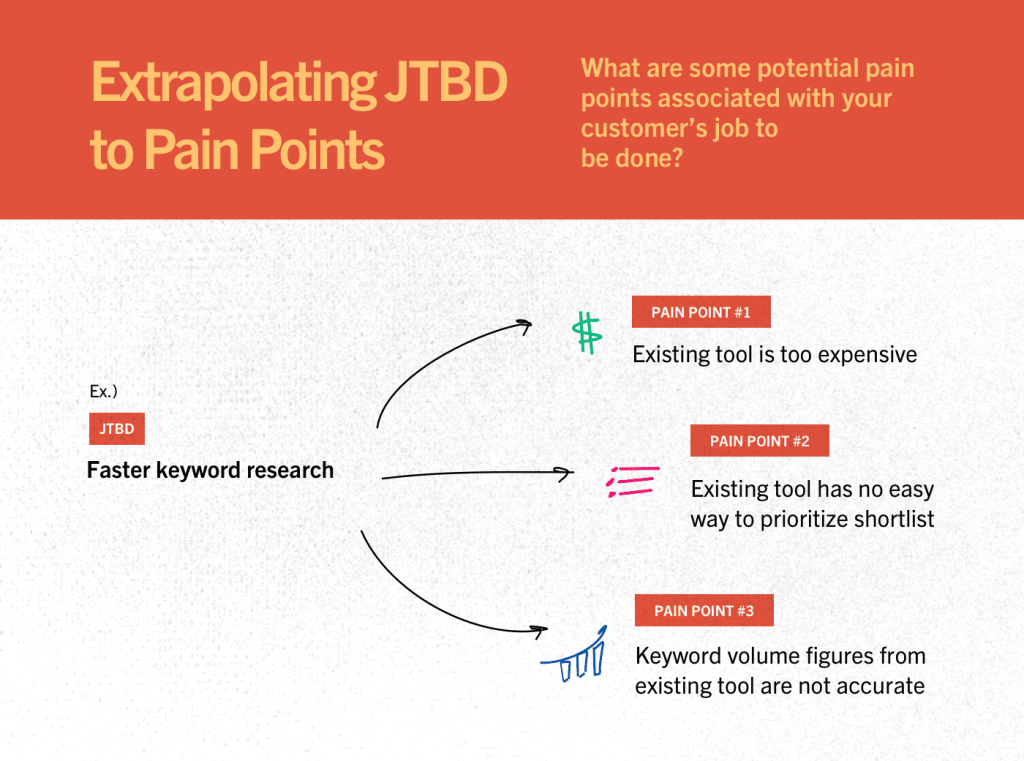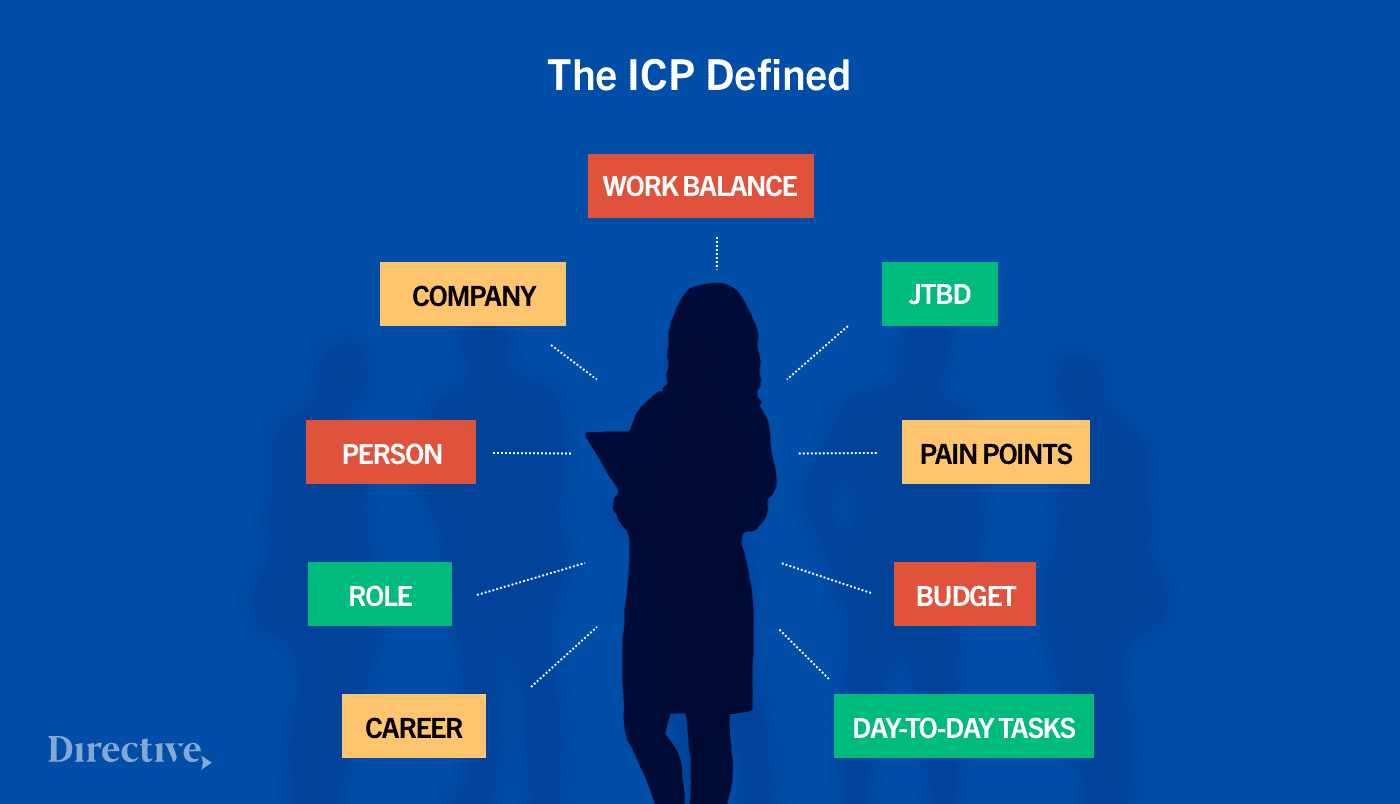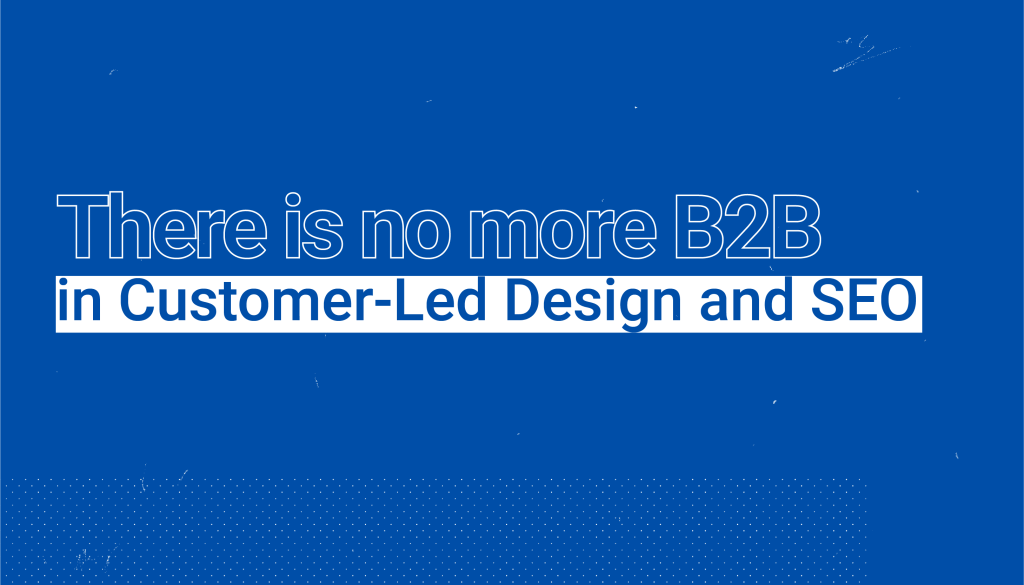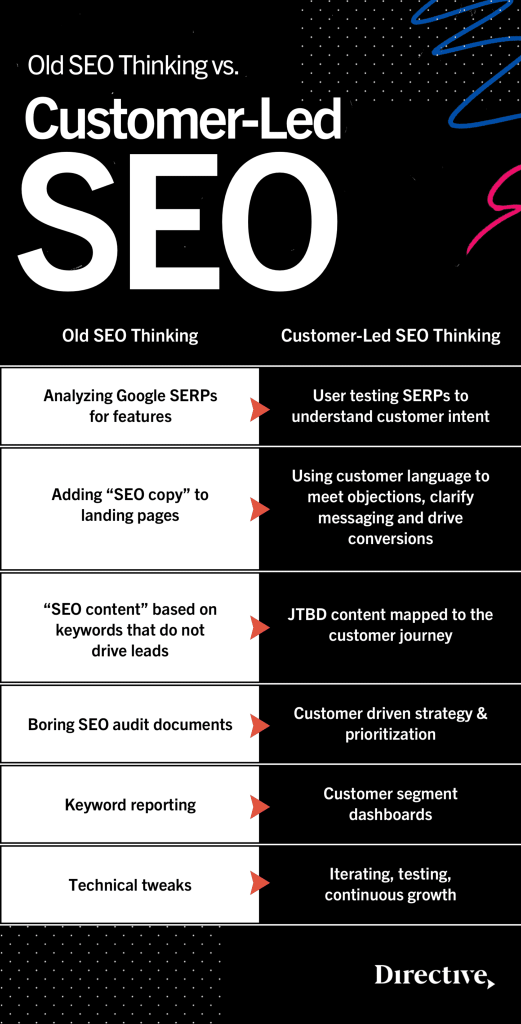B2B SEO vs B2C SEO: The True Breakdown and Comparison

B2B SEO and B2C SEO have one major commonality: the ability to be seen and found in online search results. But what about the differences? Is B2B SEO really that different from B2C SEO? As digital marketing and search engine optimization become increasingly important, it’s necessary to understand that the strategies for each should differ.
This guide will help you understand what B2B SEO and B2C SEO are by defining each and outlining all the pros, cons, importance, and scenarios where one would implement specific strategies and tactics. We will also outline the most impactful B2B vs B2C marketing strategies for both businesses and consumers that are common in today’s SaaS world.
To start, let’s agree on what each of these terms means.
What is B2B SEO
We know that B2B references the practice of selling products or services to other businesses. B2B SaaS narrows that down into selling software-as-a-service for B2B companies. SEO for B2B SaaS is implementing SEO strategies and tactics to increase organic traffic on a SaaS company website. This, in turn, drives additional site visits, conversions, and revenue for a SaaS business.
B2B SaaS SEO increases the visibility of your software to those in your target audience who are searching for your service, a similar service, or a better way to complete the jobs they need to do in their current role (Jobs To Be Done, JTBD). The sales cycle in B2B is often much longer than that of B2C. This is due to higher costs for products, length of commitment, and legal approvals needed in the SaaS space.

What is B2C SEO?
B2C SEO is what most people are familiar with. When searching for a product as a consumer, you are likely to search for terms related to a product or service you’re interested in purchasing. Like B2B SEO, this relates to performance in Search Engine Results Pages (SERPs) but it focuses on a broader audience and is not specific to someone at a certain type of business.
Both B2B SEO and B2C SEO have a goal of demand generation. B2B SEO campaigns are usually tailored to drive online conversions, moving customers through the funnel. These marketing qualified leads continue through the funnel into sales qualified leads and ideally turn into closed deals. Customer Generation, Directive’s marketing methodology, focuses on SQLs and customers.
When it comes to B2B and B2C SEO efforts, it is important to remember transactions, sales and messaging must be very different. Focusing on your ideal customer profile (ICP) can help you determine the right tactics to implement for success.

The Pros of B2B SEO
B2B SEO can help your business with discoverability, technical analysis and content strategy to drive revenue organically. These services include link building, content, and on-page improvements to optimize opportunities at every stage in your marketing funnel.
In B2B, there’s more demand for a focused audience when writing content. Once you’ve identified your ICP, you can write content to bring them to your site and move through the marketing funnel. It’s important to remember that you want quality traffic more than you want quantity. Look for high-value, long-tail keywords.
Another pro for B2B marketing is that most B2B conversions happen online, providing a playground for SEOs to test conversion opportunities. You should determine what constitutes a high-quality lead and focus efforts on bringing in that audience. Working backwards using your current close rate and MQL to SQL conversion rate, you can see that you will need a certain number of leads to meet revenue goals. Tying SEO to revenue is simple in B2B and should be a determining factor in where marketing spend should be using a well-built LTV:CAC model.
In addition, learn more about how to increase qualified B2B sales leads with paid SEO.
The Cons of B2B SEO
One of the reasons the sales cycle is longer in B2B is that there are multiple decision-makers weighing in on large purchases than in B2C purchases. B2B SEO needs to be tailored to serve multiple search queries for different decision-makers:
- Product users: Answer how-to questions for their jobs to be done
- Managers: Answer questions about best tools, services, integrations and practices
- Executives: Answer questions about scaling and longevity
Each person involved in the process will have questions about price but speaking to each audience with different content will ensure each decision-maker is confident in moving forward with your product.
In addition, many times the language used on B2B websites is more technical than language targeting a B2C audience. This is why digital marketers in the B2B space must reach their target audience with precision, identifying the right keywords for their content.

The Pros of B2C SEO
It’s no secret that the sales cycle for B2B is far longer than that of B2C. With a shorter sales cycle, businesses can meet with more potential customers. An average sales cycle of two weeks with each prospect allows businesses to meet with more people than if it takes two months.
If someone is looking to make a purchase, B2C marketers must make it easy for them. B2C SEOs must focus efforts on simple conversion paths so when a potential customer arrives on the site they can easily move through the funnel. The best B2C SEO fulfills a purchasing need directly in search results.
The Cons of B2C SEO
Consumers can be more demanding than businesses because they prefer a variety of channels, convenience and efficiency when making a purchase. Consumers today are provided with conversion opportunities everywhere they look– social media platforms, blogs, traveling the world, and more. While this can provide a plethora of conversion opportunities, many times consumers must see a product multiple times before converting. And with a shorter sales cycle than B2B, keeping these efforts cost-effective can be a challenge.
Another difficulty businesses face with B2C marketing is the ever-changing landscape. Traditional marketing techniques like billboards, TV and radio advertising no longer have the same impact. With so much opportunity online, B2C SEO has become even more important because consumers are searching for solutions to their problems and ranking at the top of those results is crucial for success. According to Psychology Today, the average person makes almost 35,000 choices per day. The time a potential customer has to decide if they are going to purchase your product is limited, so B2C marketers must ensure their product is at the top of the list.

B2B SEO vs B2C SEO: The Similarities
SEO is the process of improving your website’s visibility when people search for products or services related to your business on a search engine like Google or Bing. Improving your visibility, or ability to appear in these results, is imperative for businesses of all sizes, no matter if they are trying to bring in revenue through B2B or B2C.
Although we typically think of B2B and B2C businesses as being very different, the concept of appearing in search results is something for which every business competes. Ranking for keywords related to products and services your company offers is no longer a nice-to-have. Every company needs an online brand that will perform. This means establishing an online presence where your customers are, appearing in search results, and finding ways to organically bring in revenue for your organization.
Both B2B and B2C-focused companies have the same audience: the customer. Whether this customer works for another company that may benefit from their product or not, the customer journey is still important. The fifth pillar of Customer Generation suggests your customers are people, not corporations. They hate inhumane marketing as much as you do. Let’s change the expectation of what B2B marketing is together.
B2B SEO vs B2C SEO Differences
B2B SEO and B2C SEO have contrasting end goals they want site visitors to accomplish. There are pros and cons to both focuses, but it’s important to understand the differences, especially when creating content for these very dissimilar audiences. B2B SEO campaigns increase brand exposure and generate leads that will hopefully turn into sales, after the marketing team qualifies them. These leads come through actions including demo requests, whitepaper downloads, case study downloads and more. B2C SEO campaigns have a goal of getting visitors to make an immediate purchase on the website.
This can be seen clearly when designing a product page. B2C SEO content will focus on eCommerce or online purchases. There should be specific keyword research done to drive an audience that is ready to convert upon landing on the page. B2C SEO content may have different pages for customers in different areas of the marketing funnel. One landing page may focus on a whitepaper download and a similar page may ask the customer to complete a form and schedule a demo with the sales team. Because the B2B process will take longer, the content must be tailored to this specific approach.
Historically, B2B SaaS companies have approached SEO with the above mindset and seen success. While this is great in concept, it’s not always properly applied in practice. Customer Generation is the conversion strategy of the future and has proven to be far more effective in driving additional revenue through organic channels.
Why Customer-Led SEO > B2B SEO
Customer Generation is a marketing methodology developed by Directive that focuses on SQLs and Customers instead of legacy metrics like MQLs. Our Customer-Led approach gives you the power to impact KPIs including average contract value, trial conversion rate, lifetime value, customer acquisition cost, and more. Most B2B SaaS companies start with what they’re selling, not who they are selling to. Our approach is structured around your customer segments and customer needs. We know that your customers are people. We want to change the expectation of what B2B SEO is, by focusing on these customers.

Customer-Led SEO is the backbone of our organic strategy. We have a five-step approach to influence strategy and execution:
- We define customer segments and personas and understand their challenges and needs.
- We assess the client’s buyer journey and map offers to customer segments, directly connecting to Customer Generation.
- We research targeting options and solidify one ideal customer segment using our customer persona worksheet.
- We structure and segment campaigns around these customer needs.
- And finally, we map different messaging to the segmented campaigns for custom-tailored buyer experiences.
Interested in learning more? Let’s talk about Customer Generation today.
B2B SEO vs. B2C SEO: Key Takeaways
There are many differences between B2C SEO and B2B SEO, but it is clear there are common challenges each face. Learning and building upon proven SEO tactics can be leveraged across industries, driving revenue for businesses. B2B marketers should constantly test and challenge new strategies, striving for increased performance. Whether that is looking to B2C for inspiration or testing new ideas like Customer Generation. Want to see if a new strategy can help you reach your organic business goals? Reach out to discuss with us today.




